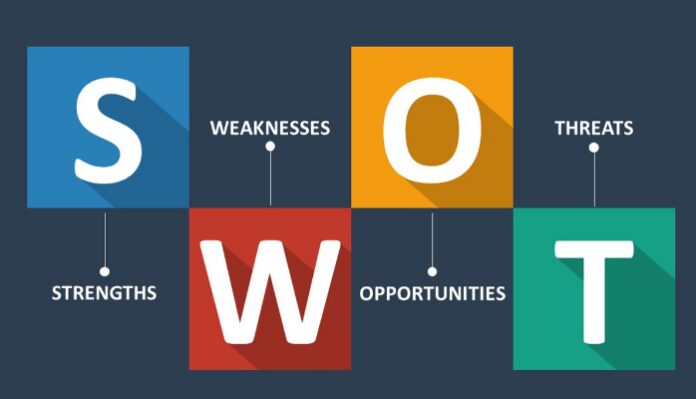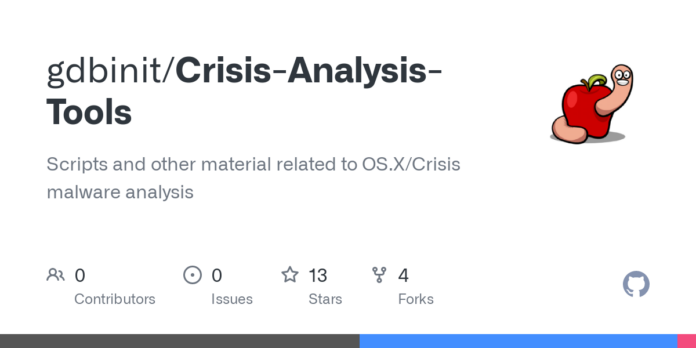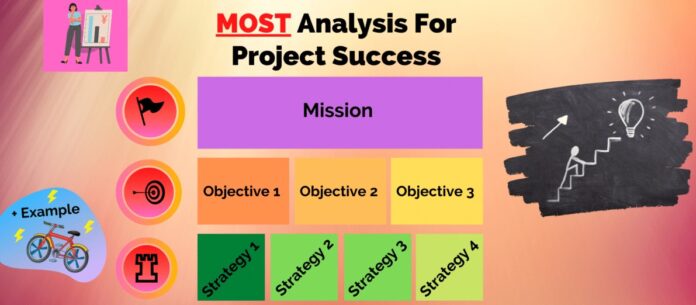Growth is vital to the operation of any business. A business that can’t sustain its level of growth may wind up struggling or even stalling.
You can prepare for your business’s growth to make it more enduring. Growing that is easier to preserve will help prepare your business for greater sustainability.
These 3 strategy tools can help you build a sustainable growth strategy. From there, the advice that follows will help you maintain the good practice you started with your plan.
1. Understanding your business

SWOT Analysis is a great tool for understanding where your business is now. It looks at 4 main areas. The first 2 help you understand your business itself, while the second 2 paint a picture of your industry and possible future.
- Strengths – what is it your business does well? What can you rely on?
- Weaknesses – what don’t you do very well? What could cause you problems if left unsorted?
- Opportunities – what could happen that’s out of your control but could be beneficial to your business?
- Threats – what events are out of control that pose a risk to your business?
2. Preparing for crisis

Unexpected difficulties are a common hurdle towards progress, and a business well aware of their existence will be better able to continue growing. Life is unpredictable, and a business that’s ready for the unexpected will be able to strengthen its growth.
Crisis Analysis is a particularly useful tool in your planning arsenal when it comes to sustainable growth. It explores the things that could go wrong and how you might face them.
To begin with, generate ideas for crises that could affect your business. This can be global scale events, such as the closure of a major logistics route, or small scale ones, like a new competitor entering your market.
For each crisis, work down from how it would affect business globally, through your country and market, to how it would affect your business directly. It’s often tempting to jump straight to your business, as these are the most obvious effects, but it could mean you miss something important.
Taking the shipping route as an example, you know that you can no longer ship to those areas now cut off. However, you may forget that one of your suppliers can’t get materials from their overseas suppliers anymore. Creating the whole web of consequence helps keep you better informed about your risks.
Once you’ve plotted out the knock-on effects of a crisis, you can figure out how you would deal with it. This could mean shoring up weaknesses it’s revealed in your business currently, or making a plan for how to handle situations like the crisis if they occur.
3. In depth planning
Easily maintained growth needs you to make sure your plan considers as much as possible. As in Crisis Analysis, leaving something out could mean you miss something crucial.
Plan your growth with your team, not alone. At BoardroomAdvisors, we believe that your full Board of Directors should be present at the strategy meeting, and all given a chance to say their part. Everyone has their own specialties, and including them will help cover all angles.
Using a defined process also helps make sure you don’t accidentally skip over anything by getting distracted by a single idea. For each of these 4 stages, start by listing all the ideas you can without trying to analyse them. Once you’ve run out of ideas, then you can think about them more.
The tool that suits this part of the process is MOST Analysis. It breaks the planning process down into 4 steps:

- Mission – a specific, achievable growth goal. For example, 50% increase in a year.
- Objectives – what do you need to accomplish to achieve your mission?
- Strategies – what are the options available to your business for completing your objectives?
- Tactics – what actionable tasks make up a chosen strategy?
It synergises well with SWOT and Crisis Analysis as they both give you information on objectives you may want to focus on. An opportunity you found or the preparation for a dangerous crisis are both great examples of something to include in your plan.
Keeping the momentum
Once you have a plan in place, you can’t just leave it be. You need to make sure your plan is being implemented properly. A great business leader keeps the momentum up.
When you wrote your plan, it included a set of actionable tactics. These should have been specific tasks with a deadline. This gives you something you can chase up.
Your team will all be very busy people. It’s easy for them to forget the additional growth related jobs on top of their day-to-day work. However, you can’t let this happen.
Remember that no one likes being micromanaged, so don’t breath down their necks to keep them inline. You should leave them to get one with things and then not check in until the end of the plan 1 or 2 years later either though.
Giving reminders consistently to all task owners shortly before their deadlines could help give them the push they need without them feeling singled out. Make sure they know they can come to you for advice if they’re insure on how to proceed so they don’t procrastinate
And, if they fail to meet a deadline, find out why this happened. If it was too much for one person to do or there were personal issues, try to support them. If they really should have got it done, what consequences are reasonable?
Going back to review

If you want to achieve sustainable growth, monitoring is key. You need to know when it’s time to change things up.
Scheduling in regular strategic reviews helps you keep up with your monitoring when it makes sense. You shouldn’t wait until the end to see if a task has been completed, and that’s also a bad time to learn it isn’t even working.
Bigger, more complex strategic plans need more regular reviews than smaller ones, so you try to find the right balance for your business. If your plan intentionally starts off slow, but does most of its growth at the end, you don’t need to review as often to begin with.
Reviews give you time to check how your growth is progressing. If you discover that you’ve slowed down early, you have a chance to recover. When you did your business plan, you listed all the strategic options you could think of, which leaves a pool of ideas to try next.
Sustainable growth comes from a well maintained strategy. If your business could benefit from strategic support, consider a part-time Strategy Director.









